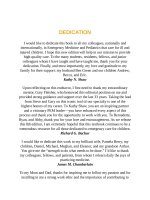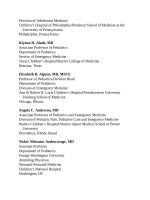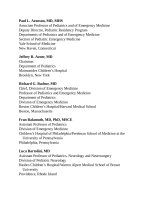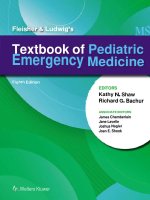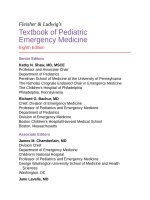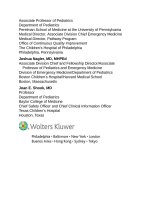Pediatric emergency medicine trisk 0332 0332
Bạn đang xem bản rút gọn của tài liệu. Xem và tải ngay bản đầy đủ của tài liệu tại đây (138.41 KB, 1 trang )
discharge home from the hospital, by already having the child’s safety seat
available. Most critically ill patients are not appropriate candidates to be
transported in a car seat.
FIGURE 11.9 A, B: Diagram of a car seat attached to an ambulance cot. A: Recommended
method for restraining children up to about 18 kg who can tolerate a semiupright seated
position, showing belt attachment to the cot and routing through the convertible child restraint.
B: Recommended method for restraining infants who cannot tolerate a semiupright seated
position, showing belt attachment to the cot and routing through the car bed loops. (From Bull
MJ, Weber K, Talty J, et al. Crash protection for children in ambulances, recommendations and
procedures. In: Proceedings of the 45th Annual Association for the Advancement of Automotive
Medicine . 2001:353–367. Reprinted with permission from the Association for the
Advancement of Automotive Medicine.)
Transport providers and passengers must also be properly restrained in the
ambulance. Sixty percent of the fatalities in a study of ambulance crashes were
ambulance personnel who were unrestrained in the patient compartment.
Additionally, all monitoring equipment must be secured to the frame of the
ambulance, because even a low-speed collision can turn loose objects into fatal
missiles for a child, provider, and/or passenger. It is unacceptable to transport a

